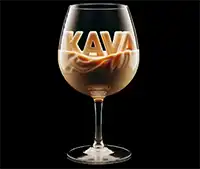From 2016 to 2020, the part of the presidential vote not belonging to the major parties dropped from 5.7 percent to 1.9 percent. It’s hard to say if this played a big role in Donald Trump’s victory in the first election and his loss in the second one, especially since he didn’t win the popular vote either time. But if we consider that Trump’s behavior and character may have limited his popularity, the presence of strong independent or minor-party candidates could be important. Additionally, nonmajor-party votes that might have gone to a major-party candidate always have an impact. Some critics of Joe Biden might think his popularity is also capped, perhaps due to his age or how some people view his presidency.
Early 2024 polls indicate a growing willingness to vote for independent or minor-party candidates. At the same time, approval and favorability ratings for likely major-party candidates, Biden and Trump, are quite low.
According to the RealClearPolitics average of polls that include independent candidates Robert F. Kennedy and Cornel West, as well as likely Green Party candidate Jill Stein, 18.2 percent of voters are open to voting for someone outside the major parties. This is significantly higher than the nonparty vote in 2016 and 2020, and roughly twice as much as the highest numbers I could find in 2016 polls when minor/independent candidates were last popular. It’s worth noting that this doesn’t even include the Libertarian party, the largest minor party, which has multiple candidates vying for their nomination, making polling challenging.
There are reasons to believe that the number of people willing to vote for independent/minor party candidates might decrease before November 2024. One reason is historical trends, as explained by Jacob Indursky in an article discussing the challenges of polling for third-party candidates.
There are a few reasons why we might see fewer people willing to vote for independent or minor-party candidates by November 2024. One big reason, as Jacob Indursky explains in an article about the challenges of polling for third-party candidates, is historical:
“Third-party candidates tend to lose support as Election Day approaches. For example, in June 2000, a Gallup survey showed Ralph Nader and Pat Buchanan, both third-party candidates, with about 8 percent support. But on Election Day, they only got 3 percent of the national vote, even though their support in Florida played a crucial role in George W. Bush’s victory. In 1980, John Anderson, an independent candidate, had around 20 percent support in Gallup polls for most of the spring and summer, but he ended up with less than 7 percent of the popular vote.”
One major reason for this decline in support for nonmajor-party candidates is relevant today:
“When voters aren’t excited about the major party candidates and want to show their dissatisfaction to pollsters, they might say they support a third option. With both Trump and Biden having low favorability ratings, according to FiveThirtyEight, high polling numbers for RFK Jr. are like a ‘cry for help’ from voters.”
Indursky also notes that support for minor-party candidates often drops as voters learn more about them. RFK Jr., who has a famous name and some appealing positions, may lose support when his less popular conspiracy theories and unclear worldview become known, especially as the major-party campaigns highlight these issues. The New York Times pointed out that Kennedy’s popularity among Democratic primary voters declined when he switched to an independent bid:
“The question is whether Mr. Kennedy’s appeal to voters will last. Shortly after he entered the Democratic primary race in April, polls showed him with up to 20 percent support among the party’s primary voters. But as he got more attention and took positions at odds with the Democratic base, his numbers dropped to single digits.”
While Cornel West isn’t as prominent in the polls as RFK Jr., he’s already facing negative press about his personal life and finances. Jill Stein’s candidacy could also remind people of her alleged role in helping Trump win key states in 2016.
Another reason why nonmajor-party candidates may poll better than they perform in elections is the difficulty of accurately predicting whether their supporters will actually vote. Many of the voters who are most dissatisfied with Biden and Trump, often called “double haters,” are less engaged and younger voters who may choose not to vote at all.
Furthermore, with major-party primaries starting soon, more general election candidates could enter the race and create confusion. The centrist group No Labels is considering fielding a candidate, and they claim they’ll only do it if that candidate has a real shot at winning, although that seems unlikely. Until they rule out this option, it could pose a threat to other nonmajor-party candidates as well as Biden and Trump.
Lastly, the crucial question is whether voters in the swing states that determine the Electoral College winner will even have the chance to vote for these candidates. According to political observer Doug Sosnik, nonmajor-party candidates have had varying success in gaining the ballot access required to influence the presidential election.
“Jill Stein recently declared her candidacy for the Green Party again, and she’s made it onto the ballot in three important states: Michigan, North Carolina, and Wisconsin. Stein is expected to criticize Biden from a more liberal standpoint on various issues, including his stance on Israel. This could have a notable impact in Michigan, which has a sizable population of over 300,000 Arab Americans. On April 14, No Labels will host a convention in Dallas to decide if they will run a candidate. So far, they’ve gained ballot access in swing states like Arizona, Nevada, and North Carolina. Robert Kennedy Jr. and Cornel West are also running, but they haven’t qualified for any state ballots yet.”
No matter how significant the support for minor parties and independent candidates seems, people are going to closely examine whether Biden or Trump would have benefited more if these other candidates weren’t in the race. As of now, 2024 polls suggest that minor party candidates are helping the 45th president to some extent, but not overwhelmingly. The RealClearPolitics polling averages for head-to-head matchups show Trump leading Biden by 3.2 percent. In polls that include Kennedy, West, and Stein, Trump’s lead over Biden is 5.7 percent. This might change once a Libertarian candidate enters the race, but it’s possible that the non-major-party vote might divide so evenly that it remains a tight race between Biden and Trump. Most experts believe that Ross Perot, the most successful independent candidate in recent decades who ran in 1992 and 1996, didn’t significantly impact the outcome of those elections, aside from influencing the topics major candidates talked about. So, while a smaller non-major party vote benefits the major parties, the outsider candidates in the mix might just add to the confusion.
Reimagined By Aibo T.
DISCLAIMER: Author is under many pen names. This article was rewritten based on these links:Third-Party and Independent Voters Are 2024’s Big Wild Card (nymag.com)



